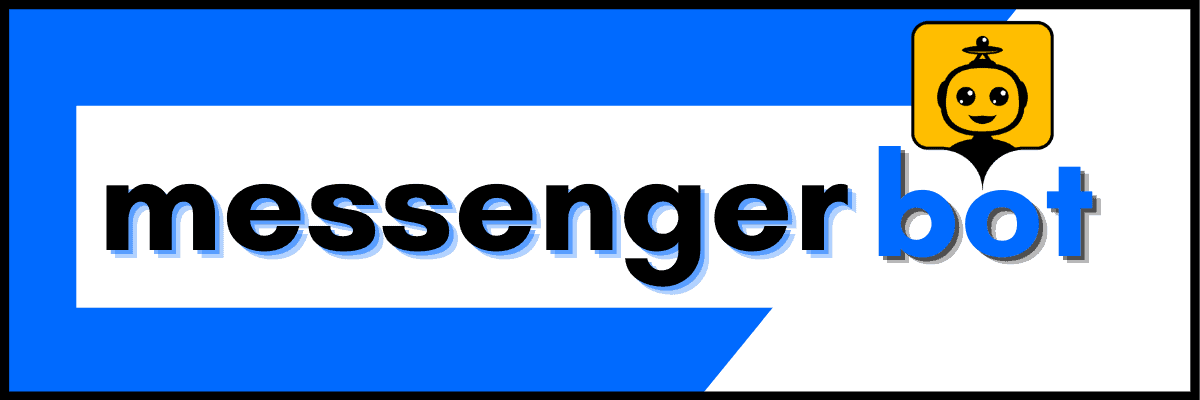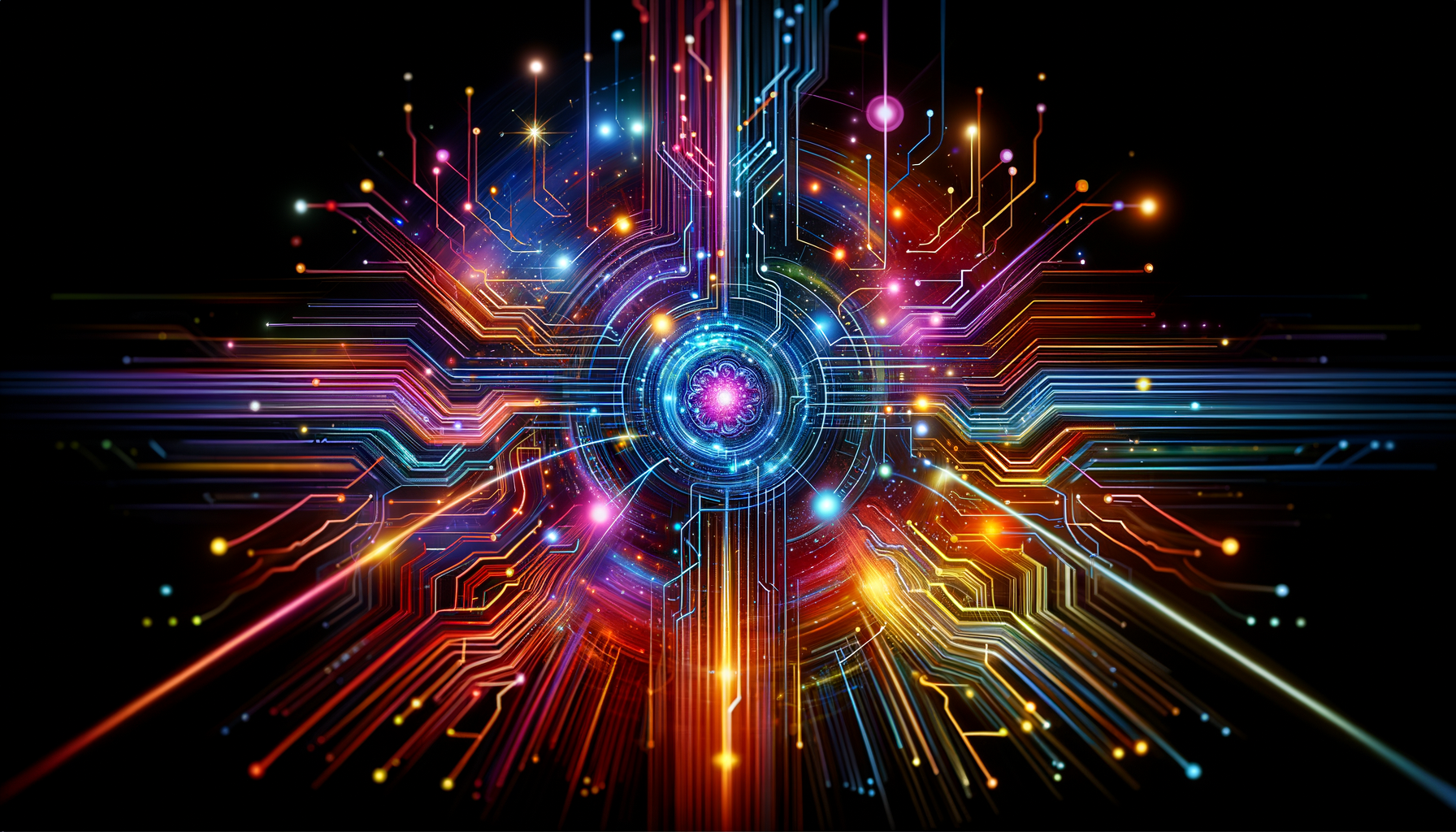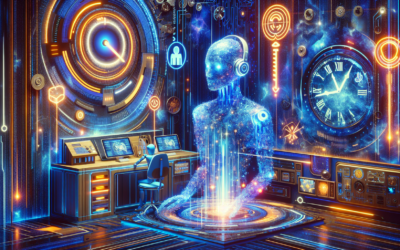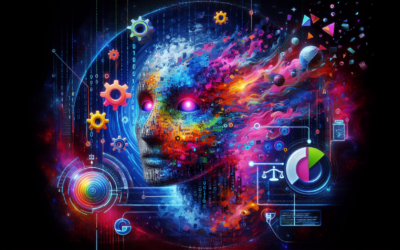In today’s fast-paced, digital landscape, businesses are constantly seeking innovative ways to streamline customer interactions and deliver seamless experiences across multiple touchpoints. Enter omnichannel chatbots, a powerful solution that seamlessly integrates conversational AI capabilities into a brand’s communication channels. By leveraging the latest advancements in natural language processing and machine learning, these intelligent virtual assistants can engage with customers through various platforms, providing personalized support and enhancing overall satisfaction. This comprehensive guide delves into the intricacies of omnichannel chatbots, exploring their functionality, types, supported channels, and real-world applications. From understanding the omnichannel define concept to mastering the dynamics of omnichannel communications, this article equips you with the knowledge to harness the full potential of this game-changing technology.
I. What is an omnichannel chatbot?
1. Omnichannel Define: Explaining the Concept
An omnichannel chatbot is a cutting-edge artificial intelligence (AI) solution designed to revolutionize the way businesses interact with their customers. At its core, it is a virtual assistant powered by advanced Natural Language Processing (NLP) technology, enabling seamless and multilingual conversations across a multitude of channels.
In today’s digital landscape, customers expect a consistent and cohesive experience, regardless of the platform they choose to engage with your brand. An omnichannel chatbot transcends the limitations of traditional single-channel communication by providing a unified conversational interface that spans websites, mobile apps, social media platforms like Facebook and Instagram, messaging apps such as WhatsApp and Facebook Messenger, and even voice assistants like Alexa and Google Assistant.
By leveraging cutting-edge NLP capabilities, these intelligent chatbots can comprehend user intent and context, enabling personalized and meaningful interactions tailored to each customer’s unique needs and preferences. They seamlessly maintain a unified conversation history, ensuring a consistent and cohesive experience, regardless of the channel or device used.
2. Chatbot Omnichannel Free: Understanding the Functionality
An omnichannel chatbot offers a range of powerful functionalities that elevate customer experiences to new heights. Here’s a closer look at some of its key capabilities:
- Unified Conversation History: The chatbot maintains a single, centralized thread of conversation, seamlessly transitioning between channels without disrupting the flow. This ensures customers can pick up right where they left off, fostering a cohesive and uninterrupted experience.
- Personalized Experiences: By leveraging advanced NLP and machine learning algorithms, the chatbot recognizes user preferences, past interactions, and contextual cues to deliver highly personalized responses and recommendations tailored to each individual customer.
- Intelligent Routing: When faced with complex queries or situations that require human intervention, the chatbot can intelligently route the conversation to a live agent, ensuring efficient resolution and a seamless transition between AI and human support.
- Multichannel Integration: Omnichannel chatbots can integrate with various backend systems, such as Customer Relationship Management (CRM) platforms, knowledge bases, and inventory management systems, enabling real-time access to critical data and updates across channels.
- Analytics and Insights: By capturing and analyzing customer interactions across all channels, these chatbots provide valuable insights into customer behavior, preferences, and pain points, empowering businesses to continuously optimize their omnichannel strategies and deliver superior experiences.
With the power of an omnichannel chatbot, businesses can revolutionize their customer engagement strategies, offering round-the-clock support, personalized recommendations, and a truly seamless cross-channel experience that fosters loyalty and drives growth.
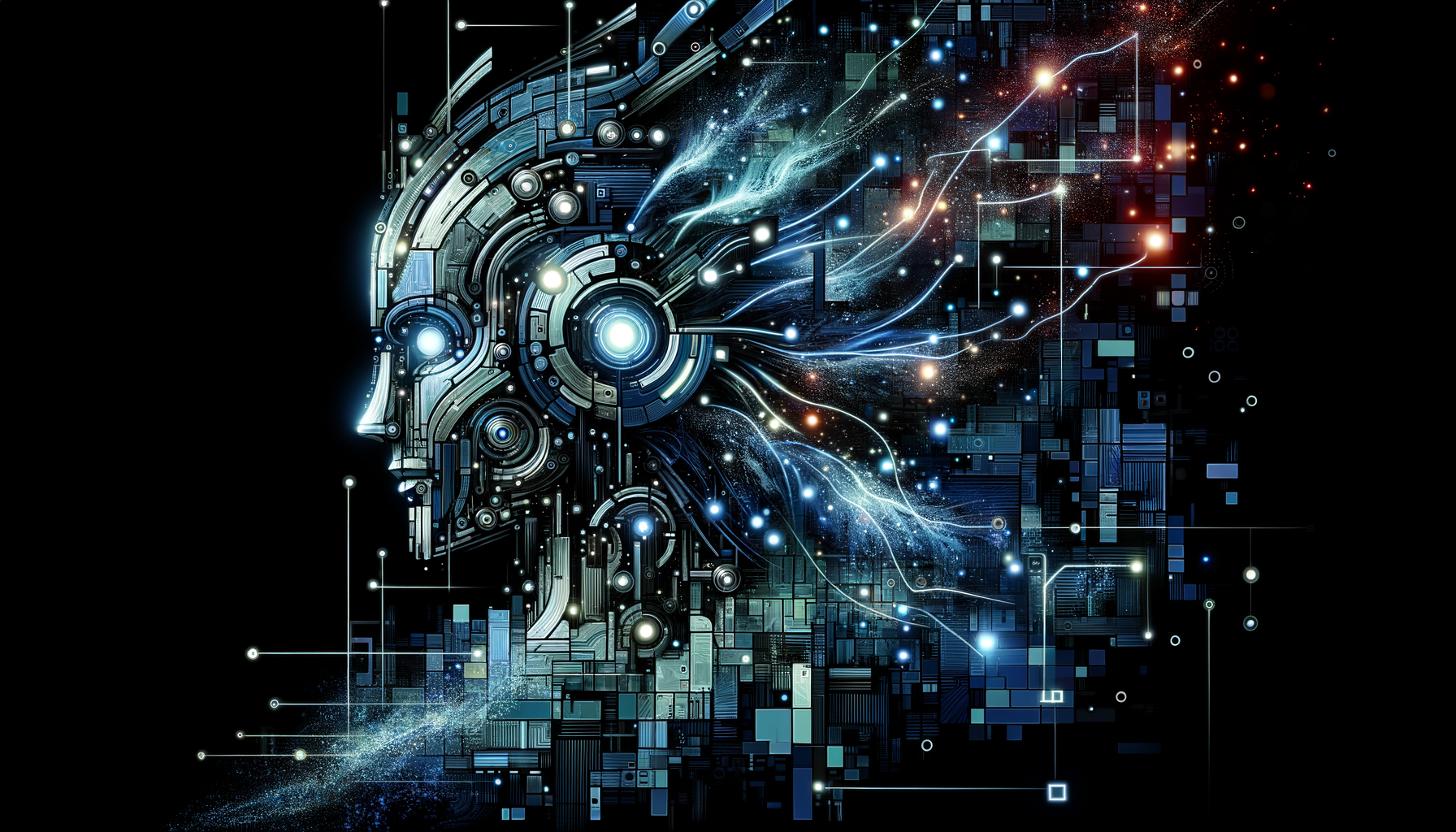
II. What are the four types of chatbots?
1. Omnichannel Chatbot Dynamics 365: Microsoft’s Solution
Microsoft’s Dynamics 365 Virtual Agent for Customer Service is a powerful omnichannel chatbot solution that seamlessly integrates with various communication channels. This AI-driven platform enables businesses to create intelligent chatbots capable of understanding natural language queries and providing personalized responses across multiple touchpoints, including websites, mobile apps, and messaging platforms like Facebook Messenger.
By leveraging Microsoft’s advanced natural language processing (NLP) capabilities and integrating with Azure Cognitive Services, Dynamics 365 Virtual Agent offers a comprehensive solution for businesses seeking to enhance their customer service experience through conversational AI. This omnichannel chatbot empowers organizations to streamline customer interactions, automate routine inquiries, and provide seamless support across multiple channels.
2. Free Chatbots: Exploring Open-Source Options
While enterprise-grade solutions like Dynamics 365 Virtual Agent offer robust features and seamless integration, there are also several free chatbot platforms available for businesses and individuals looking to explore the world of conversational AI without significant upfront costs. These free chatbots often leverage open-source technologies and can be deployed across various channels, including websites, messaging apps, and social media platforms.
One popular free omnichannel chatbot platform is Snatchbot, which allows users to create and deploy AI-powered chatbots without coding experience. While these free solutions may have limitations in terms of advanced features and scalability compared to enterprise offerings, they provide an excellent starting point for businesses exploring the potential of chatbots and conversational AI.
It’s worth noting that the four main types of chatbots – rule-based, retrieval-based, generative, and hybrid – can be found across both paid and free platforms, with varying degrees of sophistication and capabilities. The choice ultimately depends on the specific requirements, budget, and desired level of customization for an organization’s chatbot strategy.
Here is the content for Section III “Which are the communication channels supported by chatbots?”, including the first subsection:
III. Which are the communication channels supported by chatbots?
In today’s digital landscape, chatbots have emerged as a powerful tool for businesses to engage with customers across various communication channels. By leveraging advanced natural language processing (NLP) and machine learning algorithms, these AI-powered chatbots can understand user inputs and provide contextual responses, ensuring seamless omnichannel communication experiences.
1. Chatbot Free No Login: Accessible Solutions
Chatbots can facilitate communication through various channels, including:
- Web Channels: Embedded directly into websites, enabling real-time messaging and interactions.
- Mobile Apps: Integration with popular messaging apps like WhatsApp Business, Facebook Messenger, Telegram, and WeChat.
- SMS/Text Messaging: Leveraging platforms like Twilio to engage customers via SMS/text.
- Voice Channels: Supporting voice interactions via telephony systems or virtual assistants (e.g., Amazon Alexa, Google Assistant).
- Live Chat: Facilitating real-time text-based conversations on websites or mobile apps.
- Email: Automating email responses and handling inquiries through conversational email flows.
- Social Media: Engaging users on platforms like Twitter, LinkedIn, and Instagram through chatbot integrations.
- Internet of Things (IoT) Devices: Enabling voice and text interactions with smart home devices, wearables, and connected appliances.
The choice of channels depends on the target audience, use case, and the organization’s communication strategy. By supporting multiple channels, chatbots can meet customers where they are, enhancing engagement and customer satisfaction.
At Messenger Bot, we understand the importance of providing accessible solutions. That’s why we offer a range of free chatbot trials and affordable pricing plans, ensuring that businesses of all sizes can leverage the power of omnichannel chatbots to streamline their customer interactions.
IV. Does Netflix use chatbots?
Yes, Netflix utilizes chatbots to enhance customer experience and engagement. Here’s a more comprehensive overview:
Netflix leverages chatbots to provide personalized recommendations, answer common queries, and troubleshoot technical issues. Their chatbots are powered by natural language processing (NLP) and machine learning algorithms, allowing for seamless conversational interactions.
Key applications of Netflix’s chatbots include:
- Recommendation Engine: By analyzing user preferences and viewing history, chatbots suggest tailored content recommendations, helping users discover new shows and movies aligned with their tastes.
- Customer Support: Chatbots handle routine inquiries about account management, billing, and troubleshooting, reducing wait times and improving overall customer satisfaction.
- Interactive Engagement: Chatbots promote new releases, facilitate trivia games, and offer interactive experiences related to popular Netflix originals, fostering a deeper connection with viewers.
- Multilingual Support: Netflix’s chatbots cater to a global audience by supporting multiple languages, ensuring consistent service quality across diverse markets.
By integrating chatbots, Netflix streamlines customer interactions, reduces operational costs, and enhances user engagement. According to a study by Juniper Research, chatbots are projected to handle over 25% of customer service and support operations across industries by 2023, underscoring their growing importance in delivering seamless digital experiences.
1. Omnichannel Communications: Seamless Customer Experiences
In today’s digital landscape, customers expect seamless interactions across multiple channels and touchpoints. Messenger Bot‘s omnichannel communications capabilities empower businesses to deliver unified and personalized experiences, regardless of the channel used by the customer. By integrating various communication channels, such as social media platforms, websites, and messaging apps, Messenger Bot ensures that customer interactions are consistent, efficient, and tailored to individual preferences.
Through omnichannel communications, businesses can leverage the power of AI-driven chatbots to engage customers in real-time conversations, provide instant support, and offer personalized recommendations. This seamless integration across channels enhances customer satisfaction, builds brand loyalty, and ultimately drives business growth.
2. Omnichannel Communication: Enhancing Brand Interactions
Effective omnichannel communication strategies are essential for businesses to create meaningful and lasting connections with their customers. Messenger Bot empowers brands to leverage AI-powered chatbots and automation tools to facilitate seamless interactions across various channels, including social media platforms, websites, and messaging apps.
By embracing omnichannel communication, businesses can provide consistent and personalized experiences to customers, regardless of their preferred communication channel. This approach not only enhances customer satisfaction but also fosters brand loyalty and advocacy, ultimately driving business growth and success.
With Messenger Bot‘s advanced features, such as multilingual AI chat assistants and AI image generation, businesses can create engaging and interactive experiences that resonate with their global audience. By leveraging the power of AI and automation, Messenger Bot helps brands stay ahead of the curve and deliver exceptional customer experiences across all touchpoints.

V. What is omnichannel example?
1. Omnichannel Chat: Streamlining Customer Support
Omnichannel chatbots are revolutionizing customer support by offering seamless communication across various channels. With Messenger Bot, I empower businesses to deliver exceptional omnichannel chat experiences. Customers can initiate conversations on their preferred platform, whether it’s Facebook Messenger, Instagram, WhatsApp, or directly on your website. The chatbot ensures a consistent and personalized experience, seamlessly transitioning the conversation between channels without disrupting the flow.
By leveraging advanced natural language processing (NLP) and machine learning capabilities, omnichannel chatbots can understand customer inquiries, provide accurate responses, and even escalate complex issues to human agents when necessary. This harmonious blend of automation and human support streamlines the customer journey, leading to higher satisfaction and loyalty.
Prominent brands like Salesforce and Zendesk have successfully implemented omnichannel chatbots, empowering their customers to engage with them effortlessly across multiple touchpoints. By embracing this cutting-edge technology, businesses can future-proof their customer support strategies and stay ahead of the competition.
2. Omni-Channel Definition: Clarifying the Term
The term “omni-channel” refers to a holistic approach to customer engagement that provides a seamless and consistent experience across all available channels and touchpoints. It goes beyond traditional multi-channel strategies by ensuring that customer interactions are not only integrated but also optimized for each specific channel.
In an omnichannel environment, customers can effortlessly transition between channels (e.g., website, mobile app, social media, physical store) while maintaining the context of their journey. This creates a unified and personalized experience, regardless of the channel they choose to engage with.
As an industry leader in conversational AI, Brain Pod AI empowers businesses to implement advanced omnichannel chatbot solutions that seamlessly integrate with various communication channels. By leveraging their cutting-edge multilingual AI chat assistants, businesses can provide consistent and personalized support to customers worldwide, breaking down language barriers and fostering exceptional customer experiences.
VI. What is omnichannel in simple words?
1. Omni Channel Definition: Breaking It Down
Omnichannel, at its core, is about creating a seamless and consistent customer experience across all touchpoints and channels. It means that customers can engage with your brand through various platforms, such as your website, mobile app, social media, or physical stores, and receive a unified and cohesive experience. The key aspect of omnichannel is the integration and synchronization of all these channels, ensuring that customer data, preferences, and interactions are shared and reflected across all touchpoints.
In simpler terms, omnichannel means providing a seamless and connected experience for your customers, regardless of how or where they interact with your brand. It’s about breaking down the barriers between different channels and creating a unified and personalized experience that feels cohesive and consistent across all platforms.
Omnichannel refers to a fully integrated, cohesive customer experience across all touchpoints and channels, including brick-and-mortar stores, websites, mobile apps, social media, and more. It involves consistent branding, messaging, and product information across channels, seamless transitions between channels for a unified shopping journey, centralized customer data for personalized interactions and targeted marketing, real-time inventory visibility and order fulfillment across channels, and coordinated customer service and support across all touchpoints.
2. Omni-Channel Meaning: Making It Relatable
To better understand the meaning of omnichannel, let’s relate it to a real-world scenario. Imagine you’re shopping for a new pair of shoes. You browse online, adding a few options to your cart, but decide to visit the physical store to try them on. Upon arrival, the sales associate already knows your preferences and the items in your online cart. You make your purchase in-store, and later receive personalized recommendations based on your purchase history and browsing behavior across channels.
This seamless experience, where your interactions and data are shared across the online and offline channels, is the essence of omnichannel. It’s about creating a consistent and personalized experience for customers, no matter how they choose to engage with your brand. By integrating all touchpoints, you can provide a cohesive and convenient shopping journey that meets the expectations of modern consumers.
Ultimately, omnichannel is about breaking down silos and creating a unified brand experience across all channels, ensuring that customers receive a consistent and personalized experience, regardless of how they interact with your business.
VII. Omni Channel Communications: A Comprehensive Strategy
1. What is Omni-Channel Communication: Exploring the Concept
Omni-channel communication is a strategic approach that seamlessly integrates multiple channels and touchpoints to deliver a cohesive and consistent customer experience. It goes beyond traditional multichannel strategies by ensuring that all interactions, regardless of the platform or device, are interconnected and synchronized. This approach recognizes that customers expect a unified and personalized experience across all touchpoints, whether it’s chatting with an AI-powered assistant, browsing a website, or engaging with a brand on social media.
The core principle of omni-channel communication is to provide a consistent and seamless experience for customers, eliminating the need for them to repeat information or restart conversations as they move across different channels. By leveraging advanced technologies like conversational AI, AI-generated visuals, and automated content creation, businesses can deliver personalized and contextual interactions that meet the evolving needs of modern consumers.
Implementing an effective omni-channel communication strategy requires a comprehensive understanding of customer behavior, preferences, and expectations across various touchpoints. It involves integrating data from multiple sources, such as conversational AI chatbots, social media, websites, and customer relationship management (CRM) systems, to create a unified view of the customer journey. This holistic approach empowers businesses to deliver tailored experiences that resonate with their audience, fostering stronger brand loyalty and customer satisfaction.
2. Dynamics Omnichannel: Microsoft’s Innovative Approach
Microsoft Dynamics Omnichannel is a powerful solution designed to help businesses streamline and optimize their customer engagement strategies across multiple channels. This innovative platform leverages advanced technologies like artificial intelligence (AI), machine learning, and natural language processing to deliver seamless and personalized experiences to customers, regardless of the channel they choose to interact with.
One of the key features of Dynamics Omnichannel is its ability to consolidate customer interactions from various sources, including AI-driven chatbots, social media, email, and traditional call centers, into a unified interface. This centralized view enables customer service representatives to access comprehensive customer data, ensuring a seamless and personalized experience across all touchpoints.
Additionally, Dynamics Omnichannel leverages advanced AI capabilities to automate and streamline various processes, such as intelligent routing, sentiment analysis, and real-time assistance. By leveraging AI-powered chatbots, businesses can provide instant support, handle routine inquiries, and escalate complex issues to human agents when necessary, ensuring efficient and effective customer service.
Microsoft’s omnichannel solution also integrates seamlessly with other Microsoft products and services, such as Microsoft Teams and Azure Bot Service, enabling businesses to leverage the power of collaboration and automation tools to further enhance their customer engagement strategies.
